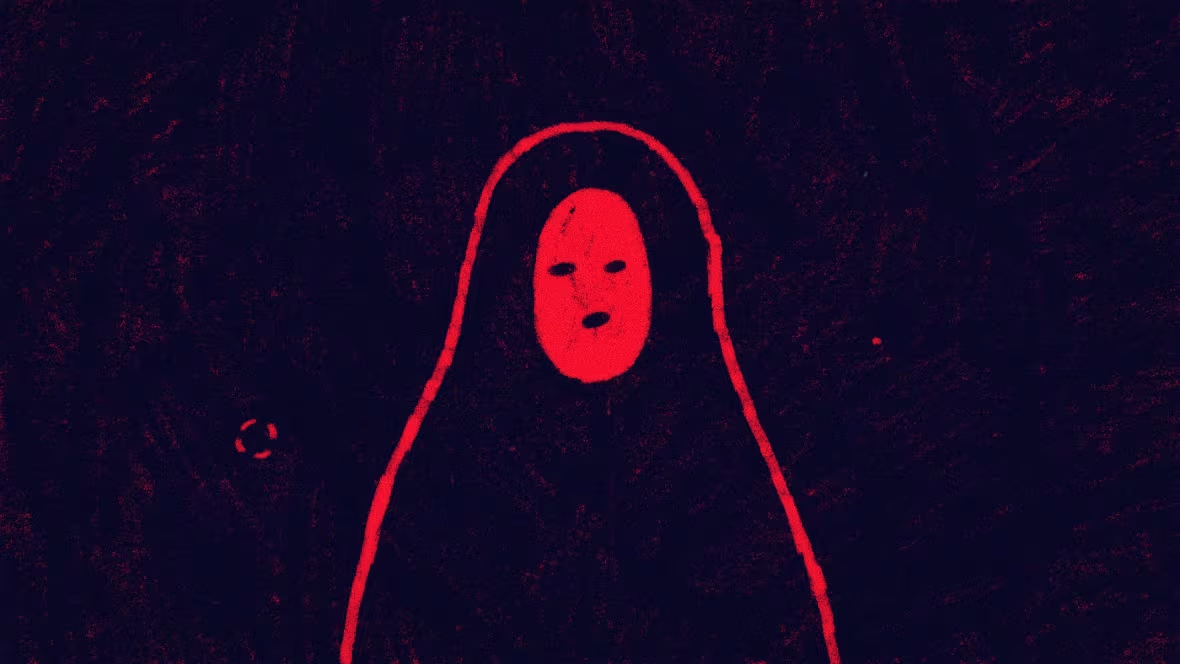Why this artist animated people's weird pandemic dreams
Marcie LaCerte says people are dreaming of ‘invisible monsters’ and ‘comfort figures’ to cope with hard times

Early on in the pandemic, Marcie LaCerte had a familiar nightmare with a pandemic twist.
She was at a concert venue, when suddenly the setting changed and she found herself in a crowded GAP store, naked — from the neck up.
"I basically started feeling that sense of anxiety that someone gets when they're naked in a dream. But rather than being naked, I was without a mask in a crowded public place," the New York artist told As It Happens guest host Peter Armstrong.
"That's just, like, one of many COVID-related dreams that I've had."
That dream inspired LaCerte to explore the role of dreams during the COVID-19 pandemic. Her colleagues Stevie Borrello and Meghan McDonough interviewed 20 people in five continents about their dreams, which LaCerte animated alongside her own GAP nightmare.
The final product, called Invisible Monsters and Tomato Soup, was published by the New Yorker earlier this month.
First the team put out a survey online asking people about their pandemic dreams. They received about 80 responses, which they narrowed down to 20 whose dreams had good visual elements for LaCerte to work with.
In the video, you can hear people's voices as they describe their dreams, interspersed with commentary from Deirdre Barrett, an assistant professor of psychology at Harvard University, and the author of Pandemic Dreams.
"We were expecting a lot of anxious dreams, which I think is pretty self-explanatory," LaCerte said. "And we did get a lot of those."
'Comfort figures' and 'invisible monsters'
Several participants described nightmares similar to LaCerte's, where they suddenly found themselves in a situation that put them at risk of exposure to COVID-19.
That's probably because interviews were conducted mostly in March and April, she said, when rules like masking and keeping two metres apart were still new.
Barrett told the artists that when people have to learn new rules and habits, they sometimes practice in their dreams.
"I imagine it's like it's like Tetris," LaCerte said. "Like when you play Tetris a lot, you end up dreaming about Tetris.

But a lot of the dreams, she said, took different shapes — images and metaphors that seemed to be rooted in the pandemic, but were not quite so literal as dreaming about masks and physical distancing.
Ominous, sinister figures made appearances, including vivid demons and faceless people in hazmat suits. People described feeling like something was out to get them, or that something just wasn't right — like a slimy black ocean where the water doesn't feel like water should.
In the video, Barrett identifies those mysterious creatures and feelings as "invisible monsters." She told the New Yorker that they are likely stand-in for real threats like COVID-19, which are hard to imagine in physical form.
"People aren't able to dream about a specific thing. They're dreaming more in metaphor and ascribing these feelings of anxiety and trauma to kind of faceless creatures," LaCerte said.

But the dreams weren't all doom and gloom.
"The main thing that I was surprised by was how people dreamed about these figures of comfort — whether or not they were related to them, or if they were just kind of like faceless, more metaphorical abstract feelings," LaCerte said. "We had quite a few people who had dreams like that."
And, being dreams, a lot of them were just inexplicably weird.
"One surprising thing is that we did have multiple dreams that featured lizards, actually, which I think is fun," LaCerte said. "I don't know if it necessarily means anything."
Written by Sheena Goodyear. Interview with Marcie LaCerte produced by John McGill.
